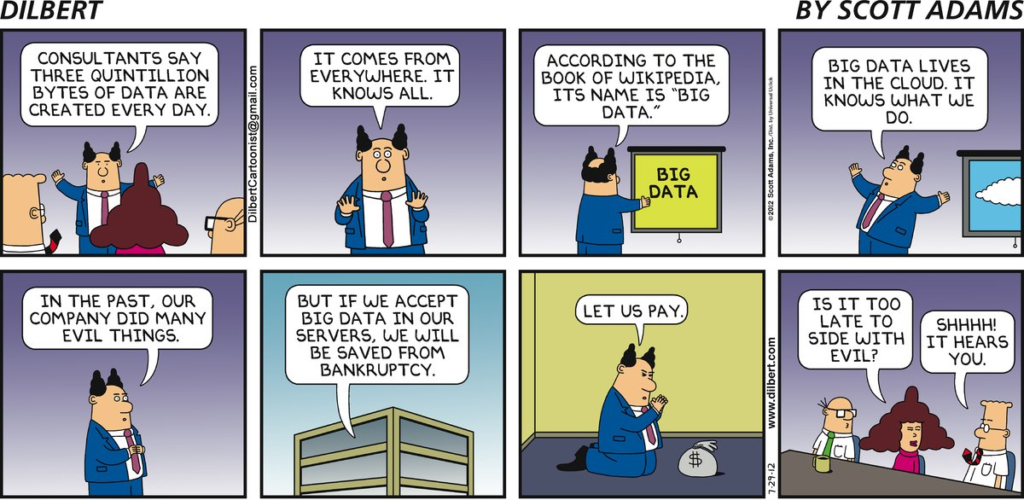I know there’s been a lot going on lately, but we’ll try to keep this edition very technical for the sake of balance. Therefore, instead of about Twitter, it will be about Ethereum, Cloud IDE, and the new Technology Radar.
1. Bloomberg Businessweek devotes an entire issue to the topic of Crypto
After a little more than two years of regularly writing these reviews, I don’t feel one bit more like a journalist, but I’ve certainly begun to respect the real ones more. That’s why we’ll start today’s issue with a Bloomberg publication. This is because the newspaper has released an entire issue of its weekly Bloomberg Businessweek dedicated to just one topic – cryptocurrencies. If you’re still confused about the subject, Matt Levine, a well-known financial author and creator of the widely read Money Stuff newsletter presents the whole thing coherently. He goes beyond the standard discussion of Bitcoin, getting hooked on NFTs, DAOs, Smart Contracts, and other aspects of this community. The whole thing is available on the internet at Bloomberg’s website. Interesting fact: this is the second time in the 93-year history that a single author has written an entire issue of Bloomberg Businessweek (the early one was “What Is Code?” Paul Ford in 2015).

However, if Bloomberg’s publication is too basic for you, I have something more technical – The Hitchhiker’s Guide to Ethereum. The text is from May 2022, so before The Merge, but for me, reading it (and I did it on the train yesterday) helped me finally understand what the hell DankSharding is and what the technical roadmap of the whole project looks like. Thanks to the fact that the author goes heavily into technical details (there’s even some math 😉 ), the text doesn’t fall into the trap of “Monads being like burritos”. By this, I mean text does not leave you with the feeling that you more or less know what it’s all about, but it doesn’t stick further. The Hitchhiker’s Guide to Ethereum requires a lot of cognitive load from the reader (despite the already relatively accessible formula). Still, I think it is a better way for more challenging topics – any oversimplification can obscure more than help.

Sources

2. Technology Radar vol. 27 is out.
Suppose I were to point out the biggest problems facing the IT industry, aside from the obvious ones such as poorly managed projects, hype-driven development, etc. In that case, my personal “pain” is that for a field named engineering, we have a massive problem with the verifiability of our decisions. Let’s face it, in the projects we develop, we often need to choose from a range of available options, often having a rather vague idea of which alternative will be better long-term. It is not without reason that it is said that in IT, everything is a “tradeoff.” But darn it if we were still able to evaluate anything after time and learn from our mistakes – very often, unfortunately, this is not the case – even if we can look at the resulting solution after time and understand its good and bad points, it only continues to give us this vague idea of whether the alternative would have been better. “The Road not Taken” and all that stuff.

It is impossible to develop (at least in the long term and in parallel) two different architectures only to observe which one gives better results after a year. Each of us has the chance in his career to see just a handful of big projects, rarely having the opportunity to work on two simultaneously and compare different approaches. Many of the repercussions come over time, and due to the high turnover in the industry, however, we will often not even know that we made a mistake. That’s why it’s so valuable that studies like Technology Radar appear – publications that help assess the usefulness of particular techniques and tools.
Okay, it is natural that some of you reading this text deserves an explanation of what Technology Radar is. Well, it is a semi-regularly (usually about twice a year) published analysis and assessment of trends that stand out in the technological world done by a company called ThoughtWorks – the consulting agency staffed by such recognized figures in our industry as Martin Fowler and Rebecca Parson. They are working with many large clients worldwide on critical projects for these companies. This gives them a unique perspective – they can test different solutions to specific problems by, for example, comparing how particular approaches have worked for particular clients.

Some people have a critical approach to Radar, treating it as somewhat skewed towards only larger organizations – an aftermath of the fact that ThoughtWorks usually works with such entities. However, from my perspective, it is a collection of pertinent observations, allowing us to broaden our horizons and “flesh out” techniques and tools that might otherwise have passed under our (heh) radar.
The new edition – Technology Radar vol.27, which came out this week – focuses primarily on four topics. So we have a bit of a reflection on how ML came under the radar, as well as the ever-present topic of using product management techniques and principles in creating engineering internal products. ThoughtWorks also leans into the increasingly elbow-pushing Edge servers. The final theme, meanwhile, is modernizing how we develop mobile apps and modularizing such projects.
But I will stop summarizing Technology Radar here (although I used to regularly do so) and I simply encourage you to read the entire report, which you can find here.
Sources

3. Why don’t Cloud IDEs achieve wider adoption? And should we even care?
And finally, we’ll talk more about Cloud IDEs. I was inspired by Corey Quinn’s text from the “Last Week in AWS” newsletter. In his Wednesday essay The Real Reason Cloud IDE Adoption Is Lagging he took on the topic of Cloud IDEs. In it, he reflects on why their adoption is so reluctant and points to the most obvious one – UX. Even the best solutions leave the impression of a half-finished product with something so… nonnative. Seemingly, everything is ok, but it feels like it’s an old paradigm, just forcibly pushed into the cloud.

Corey is echoed by Erik Bernhardsson, who takes a general look at cloud computing as such and concludes that we, as software developers, are an industry that has undergone little “digital transformation.” I know, it sounds funny, but in his text We are still early with the cloud: why software development is overdue for a change he shows how much we are still dependent on desktop software and our powerful laptops compared to other industries. Using the examples he cites, there’s no easy way to fire up 1,000 serverless functions and parallelize the compilation of a project, the clouds themselves require us to do low-level configuration such as Security Group by IP, and we still use adapters such as Docker for deployment. And while I don’t agree with all the theses in the text (the locality of some things and independence from an external platform has advantages for me), it’s hard not to agree that our tools haven’t grown up as fast as the world we’ve created for others.
However, there is one company that does quite efficiently what Erik Bernhardsson and Corey Quinn write about (well, okay, according to the latter, “least badly”) – Microsoft. But it turns out that the community doesn’t like it either, although Geoffrey Huntley – author of the rant Visual Studio Code is designed to fracture, which I’m about to share with you – has some good arguments. It all comes down to Visual Studio Code – a lightweight IDE that almost all of Microsoft has made available under an “almost” free license…. with almost making a big difference. After all, while the entire project can be freely used as open-source, all add-ons (such as the Marketplace of extensions and services for remote working) remain under Microsoft’s closed license. This leads to a situation where all open-source is “handicapped,” and it’s very difficult to produce alternatives to M$’s proprietary services – it’s hard to popularize your solution when most people choose the more complete package. Which, in this case, is Visual Studio Code, rather than VSCodium – free, open, but lacking all those cloud-based enhancements that Erik asked for. Microsoft simply has an incredible advantage here in terms of its ability to provide a full, convenient experience, which makes alternatives have no way to emerge. It’s a bit like Apple and iOS, where third-party developers have a hard time accessing NFC, and Apple apps don’t have to ask the user for permissions like the external developers.”
Sources
- The Real Reason Cloud IDE Adoption Is Lagging
- We are still early with the cloud: why software development is overdue for a change
- Visual Studio Code is designed to fracture
PS1: The quarterly results of the FMAANG have been released – and since basically all of them (except Apple and Netflix) didn’t deliver on some foot, stocks are not happy – Meta and Amazon got hit the hardest. Hiring Freezes followed…. but you’ll probably hear more about that on Monday will be told by Matthew in his Career Weekly.
PS2: And yes, I know Elon eventually took over Twitter and is doing a terrible job there, having the source code printed and stuff. If you do have not enough Twitter this week, catch a cartoon commentary on the whole situation:





